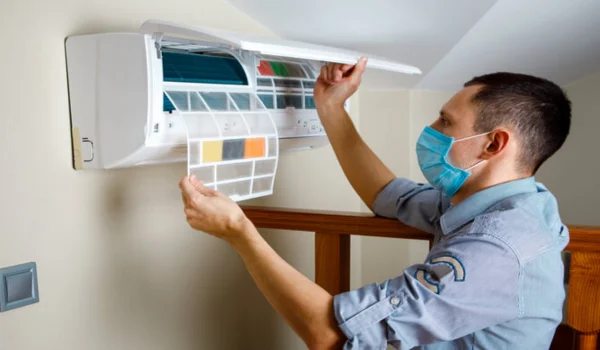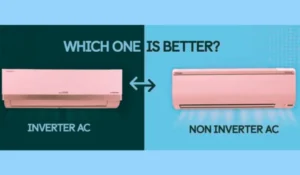As an air conditioning expert based in India, I’ve witnessed firsthand how improper installation can compromise the performance and longevity of AC units. In our diverse climate, where temperatures can soar, ensuring a correct installation is paramount. Drawing from my experiences and industry insights, here’s a comprehensive guide to common AC installation mistakes and how to avoid them.
1. Incorrect Sizing of the AC Unit
- The Mistake: Choosing an AC unit that’s either too large or too small for the room.
- Why It Matters: An oversized unit will cool the room quickly but won’t effectively dehumidify, leading to a clammy environment. Conversely, an undersized unit will run continuously, increasing energy consumption and wear.
- How to Avoid: Conduct a thorough load calculation considering room size, insulation, number of occupants, and heat-generating appliances. Consulting with a professional can ensure accurate sizing.
2. Improper Placement of Indoor and Outdoor Units

- The Mistake: Installing the indoor unit in a location with direct sunlight or heat sources, and placing the outdoor unit in a confined space without adequate ventilation.
- Why It Matters: Poor placement can reduce efficiency, increase energy consumption, and shorten the unit’s lifespan.
- How to Avoid: Install the indoor unit on a shaded wall, away from heat sources. Ensure the outdoor unit has at least 12 inches of clearance on all sides for proper airflow.
3. Inadequate Insulation of Refrigerant Lines
- The Mistake: Failing to properly insulate refrigerant lines.
- Why It Matters: Uninsulated lines can lead to energy losses, reduced cooling efficiency, and condensation issues.
- How to Avoid: Use high-quality insulation materials on refrigerant lines and ensure they are securely fastened to prevent energy loss.
4. Faulty Electrical Connections
- The Mistake: Using undersized wires, loose connections, or improper circuit breakers.
- Why It Matters: Faulty electrical setups can lead to frequent tripping, reduced performance, and potential fire hazards.
- How to Avoid: Ensure that the electrical wiring matches the AC unit’s specifications. It’s advisable to have a certified electrician handle the electrical aspects of the installation.
5. Improper Drainage System
- The Mistake: Incorrect installation of the condensate drain line, leading to water leakage.
- Why It Matters: Water leakage can damage walls, ceilings, and furniture, and promote mold growth.
- How to Avoid: Ensure the drain line has a downward slope and is free from obstructions. Regularly check and clean the drain to prevent clogs.
6. Skipping System Testing Post-Installation
- The Mistake: Not testing the system thoroughly after installation.
- Why It Matters: Undetected issues can lead to inefficiencies, increased energy bills, and potential system failures.
- How to Avoid: After installation, run the system in various modes to ensure all functions operate correctly. Check for unusual noises, vibrations, or leaks.
7. Neglecting Regular Maintenance
- The Mistake: Assuming that a newly installed AC doesn’t require immediate maintenance.
- Why It Matters: Regular maintenance ensures optimal performance, energy efficiency, and prolongs the unit’s lifespan.
- How to Avoid: Schedule periodic maintenance checks, clean or replace filters monthly, and ensure the outdoor unit remains free from debris.
Common Mistakes and Solutions
| Mistake | Consequence | Solution |
|---|---|---|
| Incorrect AC sizing | Inefficient cooling, higher energy bills | Conduct accurate load calculations |
| Poor unit placement | Reduced efficiency, increased wear | Choose optimal locations for both units |
| Uninsulated refrigerant lines | Energy loss, condensation issues | Properly insulate all refrigerant lines |
| Faulty electrical connections | System failures, fire hazards | Use correct wiring and certified electricians |
| Improper drainage | Water damage, mold growth | Ensure proper slope and regular cleaning |
| Skipping post-installation testing | Undetected issues, inefficiencies | Thoroughly test all system functions |
| Neglecting maintenance | Reduced lifespan, increased costs | Schedule regular maintenance and cleanings |
Final Thoughts
Installing an AC unit is a significant investment aimed at enhancing comfort and indoor air quality. However, the benefits can only be fully realized when the installation is executed correctly. By being aware of common pitfalls and ensuring adherence to best practices, homeowners can enjoy efficient cooling, lower energy bills, and a longer-lasting system.
Remember, while some aspects of installation might seem straightforward, it’s always best to consult or hire certified professionals to handle the process. Their expertise ensures that the system operates at peak performance, providing comfort for years to come.



